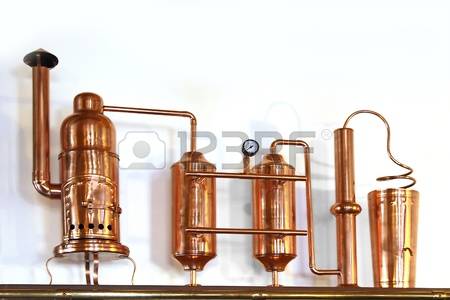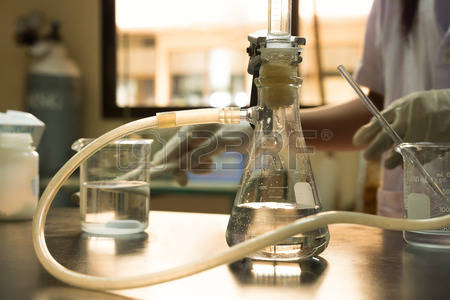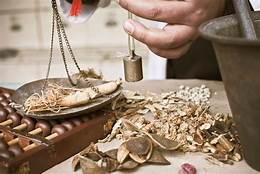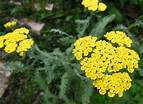Sterile Containers to Receive the Hydrosols at the Still





Sterile Containers to Receive the Hydrosols at the Still
The average flow of a distillate is three to five literes per hour, although this obviously varies from plant to plant, it therefore takes from four to seven hours to fill a twenty-liter container. If the still is an open space, everything from insects to dust to plant parts and, of course, bacteria can enter the jug along with the hydrosol during this time.. Even if the container is sterile to start with --and your hydrosol is sterile by nature--by the time a lid is put on the jug, the contents are no longer guaranteed sterile. Even a modern, clean factory environment will have dust and airborne materials, if only from the kilos of plant material being moved around.
But how bad is this, It depends on where you are and what you are distilling. Some hydrosols seem more prone to bacteria growth than others. But one thing is certain: how the waters are treated once they are bottled is a key factor in their life preservation.In my experience hydrosols that are produced in the middle of the desert or jungle are difficult to acquire. Blue tansy (Tanacetum annuum) hydrosol is one that I have long sought, but as I was told by the director of the Moroccan essential-oil producers' organization, I am unlikely ever to get it. This oil is most frequently made in mobile stills that are taken to sites where the plant material grows. it is not worthwhile to bring the water back, and as this is a low-yield blue oil from a region without excess water, experiments with cohobation are now becoming common.
I would argue that hydrosols of low-yielding , rare, or expensive plants actually have greater value both for the distiller and for the end user. Rock rose is a case in point. Rock rose oil is made from the resin that forms on the leaves of a wild plant that has a tiny yield and is laborious to gather. No matter what priced is charged for the oil, it's not a big money maker for producers. Now factor in the hydrosol. Therapeutically it is extraordinary and has the lowest pH of any hydrosol. If you add the sale of forty to fifty litres of hydrosol to your oil revenue, production becomes slightly more rational.
Most, though thankfully not all, of the distillers who keep and sell hydrosols are working from some kind of fixed site, or if the still is mobile, it is not in the back of beyond. Thus the actual quantity of particular matter that enters the waters is somewhat reduced. Rose may be an exception, as mentioned previously; even gravel has been found in drum-size containers and more than once I have filtered out insects and significant quantities of floating plant parts.
I am working with distillers on a number of control measures for hydrosols, including placing the receiving vessels in a sealed area and using fine mesh screens over the mouth of the jugs, and this year we will experiment with a special food container that will vacuum-pack the waters. I believe that these measures have resulted in higher-quality products with a longer natural shelf-life and are well worth the effort they require.
Reference: Hydrosols The next Aromatherapy: Suzanne Catty
Production and Transport






Production and Transport
Following the desired parameters for producing and transporting hydrosols:
- Sterile containers to receive the hydrosols at the still
Distillation or best-before date noted on each batch
Controlled temperature for storage at the source
Rapid shipping methods
Controlled temperature storage at the end
Filteration for particular matter
Inert storage containers
The first point of concern in maintaining the shelf life of hydrosols is where and how they are produced. Most stills producing therapeutic grade essential oils are not in pristine laboratories or modern factories. Stils are located in sheds, barns, open fields, forests, deserts, and so on.
Usually the deciding factor is the location of the water source, as distillation requires large quantities of water, both to produce steam and to cool it in the condenser.
Plant material, although bulky, is more easily transported to the site of the still than water.
- As we know, water, at least clean water, is a rare and valuable commodity. Not everyone has an ancient aquifer or pristine spring in his or her backyard.
- Although distillers who produce certified organic products have their water sources tested as carefully and frequently as their plants and oils, some distillation is done with water that might not pass this exacting standard.
- Now, although this is still a major concern, distillation purifies water, and even a non-potable water can be made safe if distilled; never the less, we want as pristine a source for our distillation water as possible.
- So let's assume that we start with really clean water and that the distillate that runs off the still comes out in totally pure form, free of contamination, free of bacteria, and containing only those additives that it has gathered from plant material in the kettle.
- Why, then, is there a problem?
Reference: Hydrosols-The Next Aromatherapy: Suzanne Catty
Traditional Chinese Medicine







Traditional Chinese Medicine
Traditional Chinese medicine (TCM) has developed over millennia, and there are four-thousand-year-old Chinese texts that lit herbs and uses and are still relevant today. It is important to remember, however, that many of the herbs are specific to the geographic region of China and either do not grow in the West or are just now being explored for their agricultural potential.
Some like ginseng, are already a big business in North America; others, like dong quai and ma huang, are now test crops for organic farmers in appropriate climates, but many Chinese plants are simply not suitable for our geography. If you wish to use hydrosols to replace certain Chinese herbs, you must get a really good materia medica to ensure that the botanical species of the hydrosols are the same as those of the herbs.
Some substitutions are possible, and in the aroma-puncture treatments we are testing (applying single drops of hydrosol to acupuncture points, the Western attributes of the hydrosol are also applied.
Most Chinese "remedies" are mixtures. In fact, there a very few single-herb treatments. Hydrosols lend themselves to being blended, as we have already seen. Also, as anyone who has used TCM knows, a Chinese remedy often consists of bags of herbs with detailed instructions on the remedy preparation
I once had a treatment that involved boiling the herbs for one hour the first day, then re-boiling for twenty minutes every day for three days thereafter. The mixture had a ferocious odor, and my neighbors began to doubt that "aromatherapy" had any benefits at all.
How much simpler to just blend your hydrosols, which have already been "boiled," and drink that as your remedy. There are TCM practitioners in several countries exploring hydrosols and essential oils. This is another area where I believe we will see some exciting developments in the years to come. There is more on the use of Hydrosols in acupuncture, acupressure, and shiatsu in the section on esoteric use.
Reference: Hydrosols- The next Aromatherapy: Suzanne Catty
Herb Teas







Herb Teas
We ca also compare hydrosols to herb teas. For literally thousands of years herbs have been used for health in the form of tisanes. A small amount of herb is steeped in hot or boiling water and the resulting tea is consumed for specific physical or mental conditions. Chamomile tea relaxes the body, calms the mind, and aids sleep. Linden treats stress and anxiety and also aids sleep; peppermint helps indigestion and wakes us up.
Ginger root gives warmth and eases a cough or motion sickness. There are hundreds of herb teas with "accepted " or "proven" properties. In fact, the German government's Commission E has approved medical uses of tisanes, including peppermint, fennel, linden, German chamomile, and melissa.
The average tea bag weights two grams. Depending on the herb, this equates to approximately four to eight grams of fresh plant materials per bag. We might add anywhere from 100 to 150 milliliters of water and brew the mix for ten to fifteen minutes, depending on the desired strength of the tea we are preparing. The result is a ratio of maybe 0.08:1 herb to water. Hydrosols, depending on the plant material, are at the very least 1:1 plant to water and more frequently 3 or 4:1.
If herbal teas work, can't we assume that something so much more concentrated will also work? Diluted (thirty milliliters in one liter of water), hydrosols are still as strong as, or stronger than, herb tea. There is also the issue of fresh versus dried plant material. We know that some of the volatile and fragile components of herbs are lost during the drying process. Drying techniques are, in fact, one of the biggest problems facing herb growers. I recently saw an innovative drying container for organic herb production.
The fresh plant material is set on a net suspended three feet in the air in an enclosed room , and both fans and heaters circulate warm air through the material. The temperature is controlled to ensure optimum speed of drying with minimum loss of volatile components for each type of plant and plant part being dried.
In this manner one hectare of German chamomile flowers can be dried in less than a day. However, we know that most herbs on the market are not dried so carefully and many are not organic. Recent studies in the United States and Canada on herbs imported from China showed that these "medicinal herbs" contained large amounts of chemical contaminants in the form of pesticides, herbicides, and so on and also contained far less than the expected concentrations of active therapeutic compounds.
If we were to make a tisane from such herbs, what medicinal value would it have and what concentration of active ingredients would be in each dose? When plant material is distilled for essential oils and hydrosols, it is often put into the still in a fresh or only slightly wilted state, rarely if ever fully died.
If we are buying from certified organic producers, we are getting not only a contaminant-free product but also one in which the fragile and volatile components remain in the plant material being processed, thus delivering a more therapeutic finished product. Ultimately the effectiveness of hydrosols must be significantly higher than that of herbal teas, regardless of dilution rates.
There are, of course, varying qualities in waters, as in oils, and just because a hydrosol is certified organic does not make it good. I was sent some certified organic rosewater last spring, but neither the taste nor the fragrance was very rich. The internal effects seemed minimal and that "feel-good feeling" I associate with drinking rose was missing altogether.
When I called the supplier, I asked if the distillation was just for hydrosol or for oil as well. The supplier informed me that, like many others, the company distilled rosewater from dried roses year-round to keep up the demand. There was no oil produced from the distillation and the plant -to-water ratio was 1:1 That may work in baklava but not for menopause.
On the other hand, a shipment of cinnamon hydrosol from leaves wild-harvested in the Madagascar rain forest was a feast for the senses. Distilled by local people in very basic conditions, this hydrosol was particularly energetic and helped a severely stressed woman get through a lengthy and nasty court battle, focused and with a smile on her face, without filling the prescription for Prozac that her doctor had given her.
Reference:Hydrosols - The Next Aromatherapy: Suzanne Catty
Articles - Most Read
- Home
- What are Hydrosols
- What are Hydrosols-2
- The Monographs
- How to Make a Hydrosol
- Table of Common Latin Names and pH Values - F - O
- Distilled or Extracted Specifically For Therapeutic Use - 3
- Kurt Schnaubelt
- What isn't a Hydrosol?
- Table of Common Latin Names and pH Values - P - S
- Wholly Water!
- Blue Babies
- Supply and Demands
- Mature Skin
- Recipes Alpha F
- Hydrosols In The Marketplace
- Chemicals: Friends or Foes?
- Hemorrhoids
- Nelly GrosJean
- Water as Medicine
- The Educated Consumer
- Genitically Modified Plants
- Influences
- Water Quality
Articles-latest
- Daucus carota/Wild Carrot Seed - pH 3.8-4.0
- Cupressus sempervirens/ Cypress-pH3.5-3.7
- Coriandrum sativum/Coriander Herb-and-Seed
- Comptonia peregrinal/Sweet Fern- pH 3.8
- Citrus clementine (fe) Clementine Petitgrain- pH 4.3-4.4
- Citrus aurantium var. amara (flos) /Neroli Orange Blossom-pH3.8-4.5
- Cistus ladaniferus/Rock Rose-pH 2.9-3.1
- Cinnamomum zeylanicum (ec) Cinnamon Bark-pH3.3
- Chamaemelum nobile/Roman Chamomile - pH 3.0-3,3
- Centaurea cyanus/Cornflower/Bachelor's Button-pH 4.7-5.0
- Cedrus atlantical/Cedarwood/Atlas Cedar-pH 4.1- 4.2
- Hydrosols -The PH - Anomalies
- Hydrosols- Establishing Shelf Life and Stability
- Boswellia carterii/FRANKINCENSE
- Asarum canadense/ Wild Ginger/Canadian Ginger
- Artemesia vulgaris / Artemesia
- ARTEMESIA DRACUNCULUS - TARRAGON
- Angelica archangelica / Angelica Root - Hydrosols
- The Key, or More Correctly, the pH - 2 - Hydrosols
- The Key, or More Correctly, the pH-Hydrosols
- The Hard pHacts - Hydrosols
- Calamus Root/Sweet Flag - ACORUS CALAMUS
- Yarrow - Achillea millefolium - Hydrosols
- Balsam Fir - Abies balsamea - Hydrosols

